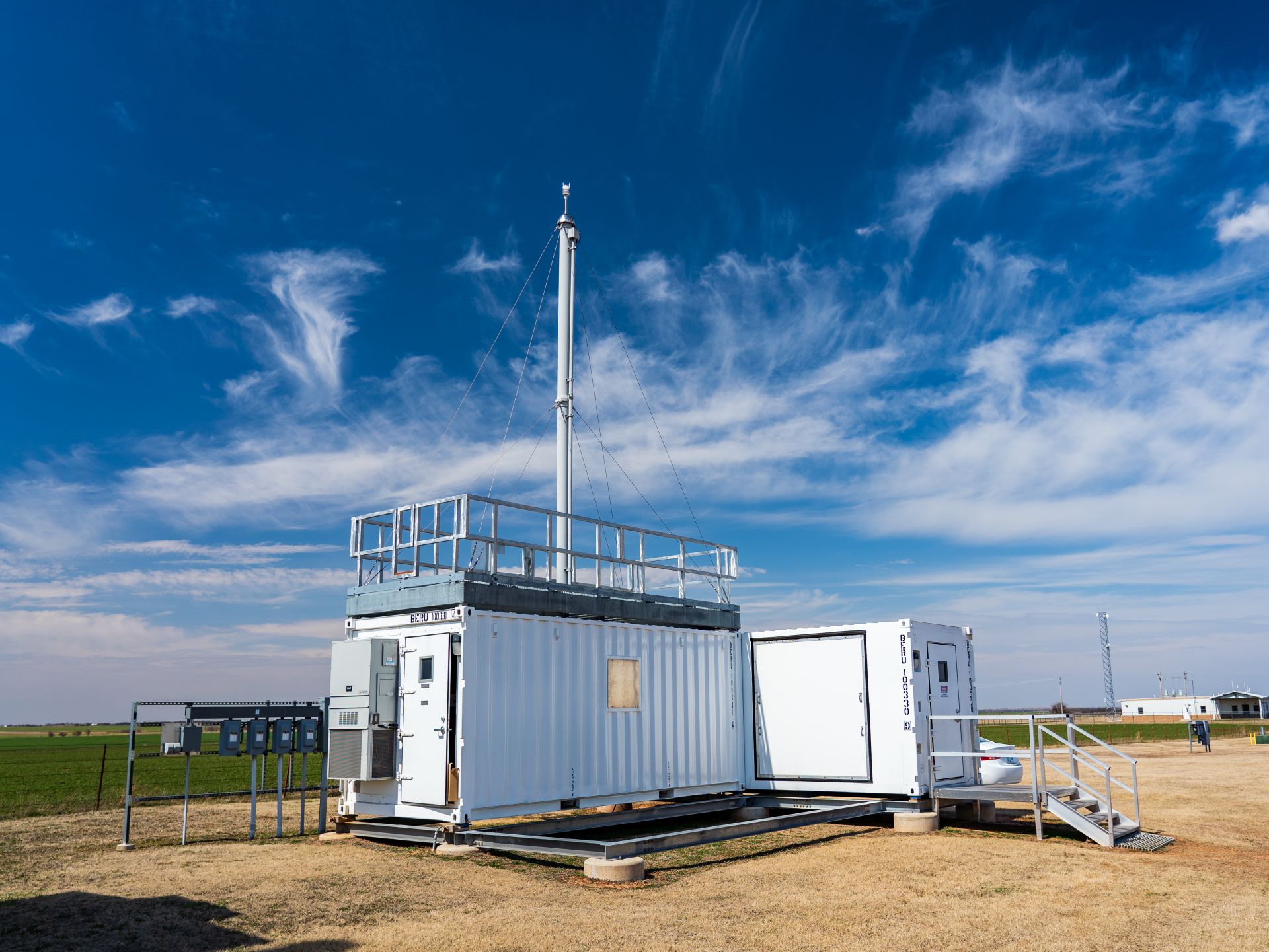Boon of New Aerosol and Trace Gas Data for ARM Users
Published: 16 February 2021

The Atmospheric Radiation Measurement (ARM) user facility recently released b1-level data products for aerosol size distributions, aerosol chemical composition, and trace gases to the ARM Data Center.
ARM b1-level products undergo calibration, correction, and quality control processes beyond the facility’s standard quality checks and corrections. Oftentimes, b1-level products are then further developed into c1-level value-added products.
The recent aerosol and trace gas b1-level releases are part of ARM efforts to harmonize—or standardize—data from instruments within its Aerosol Observing Systems (AOS).
Across ARM, b1-level data are now available for the ultra-high-sensitivity aerosol spectrometer (UHSAS), aerodynamic particle sizer (APS), and regular and nanoparticle scanning mobility particle sizers (SMPS and nanoSMPS). The b1 processing converts raw (a1-level) counts from these four instruments to the same units and standardizes variable names.
Data are now available in the ARM Data Center for the following sites and field campaigns:
- AOSUHSAS: Eastern North Atlantic (ENA) atmospheric observatory; Southern Great Plains (SGP) E13 site near Lamont, Oklahoma; third ARM Mobile Facility (AMF3) at Oliktok Point, Alaska; Cold-Air Outbreaks in the Marine Boundary Layer Experiment (COMBLE) in northern Norway; and Multidisciplinary Drifting Observatory for the Study of Arctic Climate (MOSAiC) expedition in the central Arctic
- Get AOSUHSAS data: https://adc.arm.gov/discovery/#/results/s::aosuhsas
- Cite the data: doi:10.5439/1409033.
- AOSAPS: SGP E13
- Get AOSAPS data: https://adc.arm.gov/discovery/#/results/s::aosaps
- Cite the data: doi:10.5439/1407135
- APS b1-level data are coming soon from the Cloud, Aerosol, and Complex Terrain Interactions (CACTI) campaign in Argentina.
- AOSSMPS: SGP E13, CACTI, COMBLE, and MOSAiC
- Get AOSSMPS data: https://adc.arm.gov/discovery/#/results/s::aossmps
- Cite the data: doi:10.5439/1476898
- SMPS b1-level data are coming soon from the Layered Atlantic Smoke Interactions with Clouds (LASIC) campaign on Ascension Island.
- AOSNANOSMPS: SGP E13
- Get AOSNANOSMPS data: https://adc.arm.gov/discovery/#/results/s::aosnanosmps
- Cite the data: doi:10.5439/1635016.
In a future development, some of these data will be merged into a single, consistent size distribution that covers the entire measured size range.
ARM also has new b1-level chemical composition data from the quadrupole aerosol chemical speciation monitors (ACSMs) at the ENA and SGP E13. The new AOSACSM data, from September 2019 onward, are available in near-real time in the ARM Data Center.
The b1 ACSM processing gives users calibrated concentrations of organics, sulfate, nitrate, ammonium, and chloride; quality assurance/control; and a volume concentration to facilitate comparison to size distribution measurements.
- Get AOSACSM data: https://adc.arm.gov/discovery/#/results/s::aosacsm
- Cite the data: doi:10.5439/1558768.
For trace gases, recent b1-level releases include calibrated AOS ozone monitor (AOSO3) data from the ENA, SGP E13, AMF3, COMBLE, and MOSAiC. These data are available now in the ARM Data Center.
The b1 processing routine applies the appropriate calibration to the data, evaluates the instrument baseline by analyzing the automated zero measurements, and subtracts it from the data.
- Get AOSO3 data: https://adc.arm.gov/discovery/#/results/s::aoso3
- Cite the data: doi:10.5439/1346692.
To download data from the ARM Data Center, you must have an ARM account. Create an ARM account now.
If you have questions or feedback about the data, please contact ARM translator John Shilling.
Keep up with the Atmospheric Observer
Updates on ARM news, events, and opportunities delivered to your inbox
ARM User Profile
ARM welcomes users from all institutions and nations. A free ARM user account is needed to access ARM data.


















